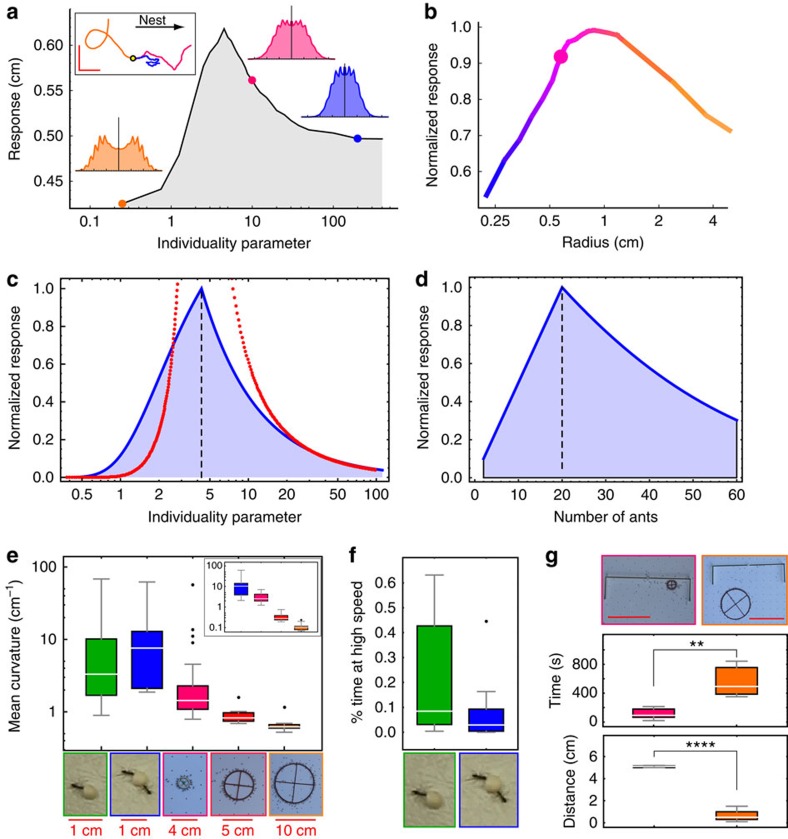Figure 4. Group optimality.
(a,b) Simulation data of the response of the object to a single attachment of a single-knowledgeable ant as a function of the individuality parameter Find (a) or of the object's radius (b). Insets depict velocity component distributions for small (orange) and large (blue) values of Find as well as its fitted value (pink). Upper left inset depicts trajectories (all starting at the yellow dot, colour coded as before) that take into account the continual arrival of informed ants (scale bars represent 10 cm). The pink dot in b marks the radius of the experimental load. (c,d) Exact solution of the Ising spin model. (c) Normalized (dimensionless) system response as a function of the individuality parameter Find. The blue curve marks the short-term response to a newly attached ant and the red curve the mean-field susceptibility, which diverges at the critical point. (d) Normalized (dimensionless) short-term response to a newly attached ant as a function of the mean number of ants attached to the load (a proxy for load size). Dotted lines mark the critical transition points. (e–g) Experimental verification. (e) Mean absolute curvature of trajectories of objects of different size (total N=90). Synthetic and non-synthetic materials that were used for the small item exhibited similar curvatures (medians: synthetic: 8.84, non-synthetic: 6.53, unpaired two-sample t-test: P=0.6285, N=9) and were therefore pooled together. Thus, the effect presented in the figure is a size effect that cannot be attributed to load substance composition. Inset: mean curvature of simulated tracks of objects of different sizes (calculated on clean board conditions). (f) Time spent at ν>75% transport speed for one (green) versus 2–4 (blue) ants carrying a small load (total N=20). (g) Top: time to negotiate an obstacle (t-test: P<0.01) and (bottom) the maximal backwards displacement (t-test: P<0.0001) towards a successful crossing of a U-shaped block (which required 5-cm backtracking) for two load sizes (total N=11). Scale bar, 10 cm.

